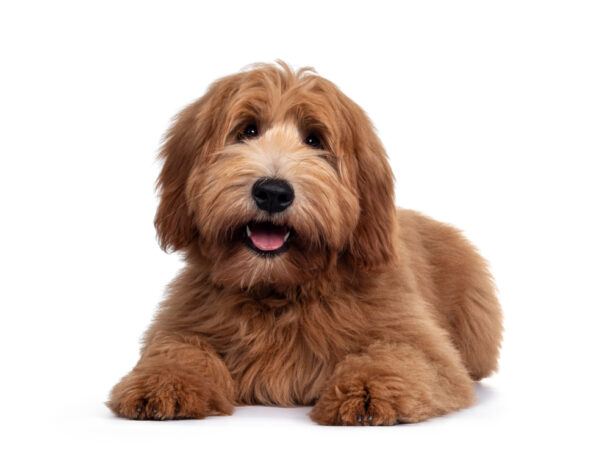LifeWithMyDogs is supported by our audience. When you purchase through one of our links, we may earn a small affiliate commission. As an Amazon Associate I earn from qualifying purchases. Your cost is not affected.
**********
My deep passion for ensuring a healthy and happy furry companion has led me on a journey to find the best grooming tips for puppies. Over the years, I’ve discovered the immense importance of grooming in maintaining their physical well-being and strengthening the bond between us. Through countless grooming sessions filled with brushes, baths, and bonding sessions, I’ve learned valuable insights that I’m excited to share with my fellow pet parents.
From my firsthand experiences and learning from professionals, I have gained sufficient knowledge to share my expertise in grooming puppies. I cover everything from understanding their coat types to establishing a grooming routine and addressing common challenges along the way. Whether you’re a new pet parent or a seasoned pro, this is a rewarding journey of puppy parenthood, one brush stroke at a time.
Grooming Tips for Puppies: Start Your New Pet’s Care The Right Way
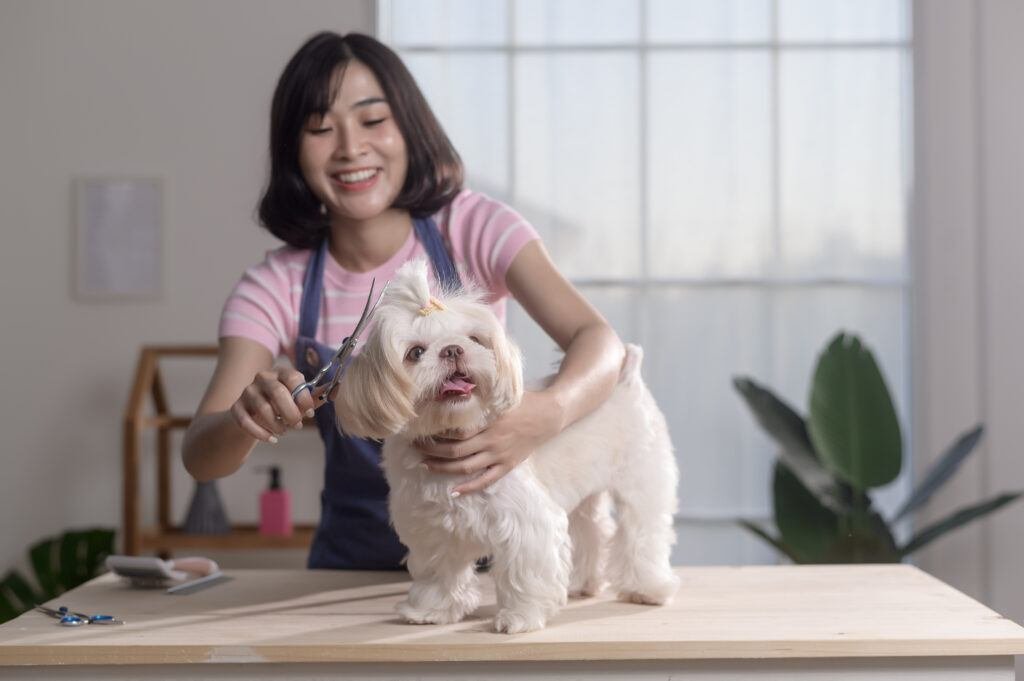
Grooming your puppy is not just about keeping them looking good; it’s a vital part of their overall health and well-being. Starting early can help your puppy become accustomed to grooming, which is essential for a stress-free experience throughout their life.
Regular grooming sessions are the perfect opportunity to check for any irregularities in your puppy’s health, such as bumps, pests, or skin issues, and to maintain their coat in optimal condition. Establishing a grooming routine is also an excellent way to strengthen the bond between you and your puppy.
Each grooming task, from brushing to bathing, nail trimming to ear and dental care, plays a crucial role in keeping your puppy healthy. It’s also important to gradually introduce your puppy to the array of grooming tools and techniques, ensuring they are comfortable and safe during each session.

Key Takeaways
- Grooming is critical for a puppy’s health and helps them get accustomed to being handled.
- A consistent grooming routine enhances your bond with the puppy and keeps their coat healthy.
- Introducing grooming gradually ensures your puppy’s comfort with the process.

Understanding Puppy Coats
When considering the care of your puppy, it’s important to recognize that their coat is an essential factor for their overall well-being. Different types of fur require unique grooming techniques.

Types of Puppy Fur
Your puppy’s fur may fall into various categories, each demanding a particular grooming approach.
- Short-haired Coats: Often sleek and less demanding in terms of grooming. Regular brushing with a bristle brush usually suffices to keep it neat.
- Double Coats: Consists of a dense undercoat and a longer topcoat; frequent and thorough brushing is necessary to reduce shedding and prevent matting. Examples include the Siberian Husky and Golden Retriever.
- Curly or Wavy Coats: Common in breeds like Poodles; prone to tangling. They require regular combing and occasional trimming.
- Long-haired Coats: These silky coats can easily tangle and attract debris, necessitating daily brushing and regular bathing.
Shedding and Coat Growth Cycle
Puppies experience a natural process of shedding and coat growth, which is influenced by their breed, age, and health condition.
- Shedding Phase: Older fur is replaced by new growth. Shedding can be seasonal for some breeds or continuous throughout the year.
- Growth Phase: Puppy fur may transition to their adult coat as they mature, often becoming thicker and requiring different grooming tools and techniques.
Brushing in the direction of hair growth helps maintain a shiny coat and minimizes shedding.
A proper grooming routine tailored to your puppy’s specific coat type contributes greatly to their comfort and health.
Basic Grooming Supplies
Proper grooming is crucial and having the right tools will ensure that your puppy looks and feels their best. Here’s a list of essential supplies to get you started.
Brushes and Combs
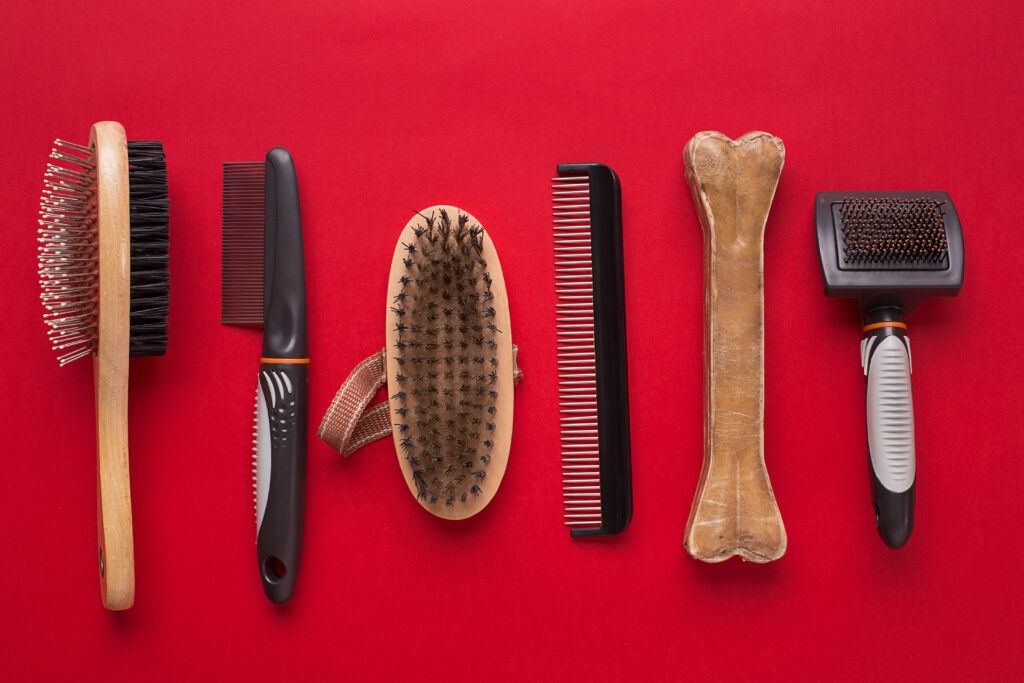
Your grooming kit should include a variety of brushes and combs to accommodate your puppy’s coat type. For example:
- Slicker Brush: Ideal for detangling and removing loose fur.
- Bristle Brush: Suitable for short-haired breeds to add shine to the coat.
- Comb: Helps fine-tune the grooming process by removing any remaining tangles and smoothing the fur.
Shampoos and Conditioners
Selecting the right shampoos and conditioners is key for maintaining healthy skin and a lustrous coat.
- Puppy Shampoo: Choose a gentle formula specifically designed for puppies to ensure the water temperature is warm and comfortable.
- Conditioner: Helps to moisturize the skin and soften the coat for easier brushing.
Grooming Clippers and Scissors
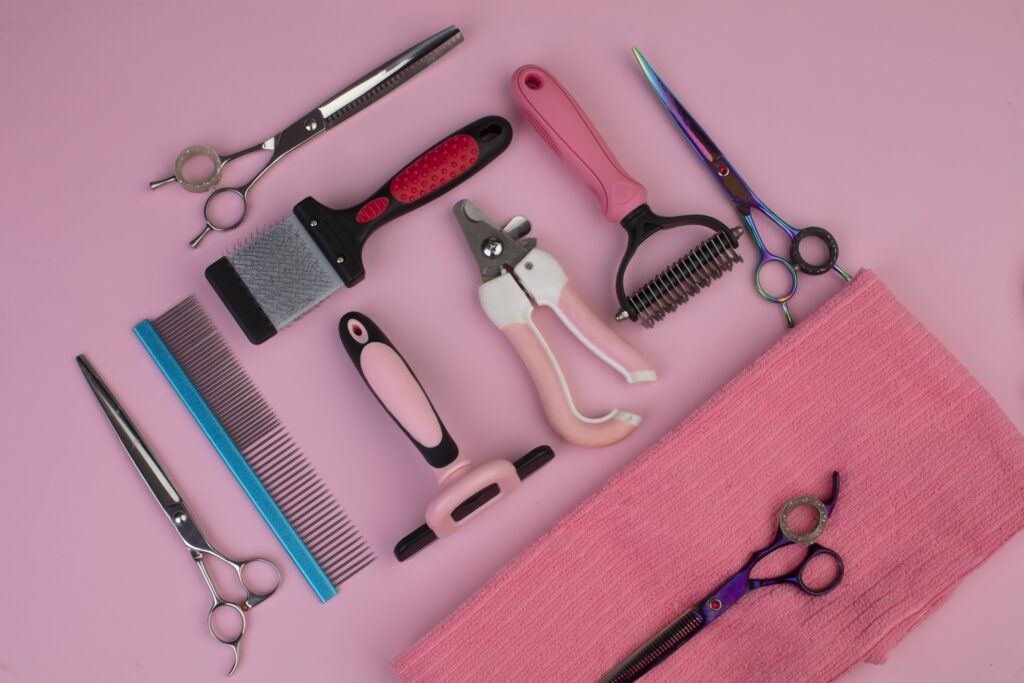
Grooming clippers and scissors are necessary for trimming and shaping your puppy’s coat.
- Clippers: Electric clippers are useful for bulk hair removal on dogs with thicker coats.
- Scissors: Ideal for trimming sensitive areas and for fine-tuning the grooming process.
Nail Clippers
Nail clippers are an essential tool for maintaining your puppy’s paw health.
- Guillotine Clippers: Best for small to medium-sized puppies.
- Grinding Tools: These can smoothly file down nails without the risk of cutting too short.
Setting a Grooming Routine
Establishing a consistent grooming routine for your puppy not only keeps them clean but also lays the foundation for a lifetime of good hygiene practices.
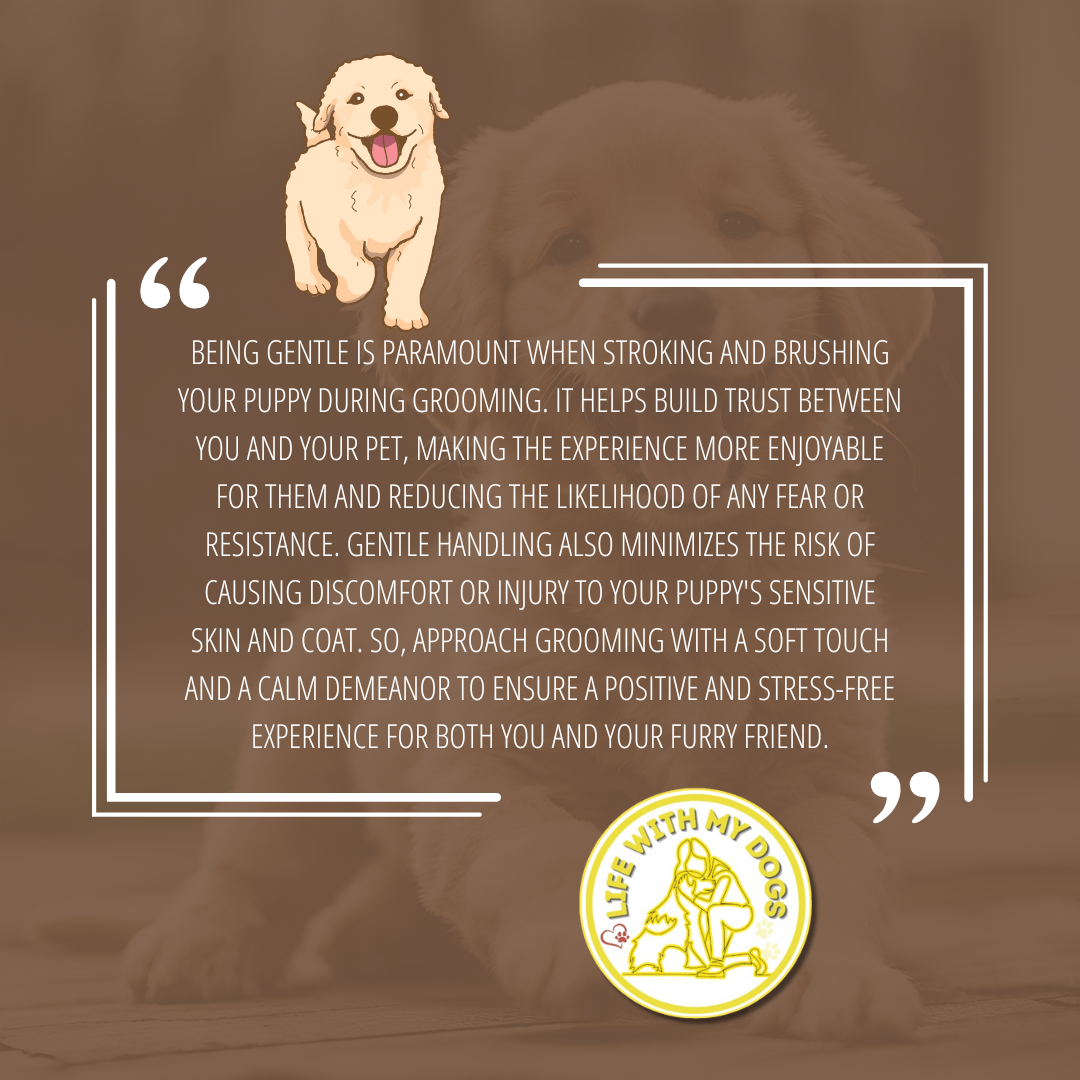
Frequency of Grooming
Puppies require grooming more often than adult dogs due to their fast growth and the need to acclimate them to the process early on. Begin with weekly sessions, slowly increasing the frequency for breeds with fast-growing nails or coats.
- Short-haired breeds: once a month
- Long-haired breeds: weekly to prevent tangles
Step-by-Step Grooming Process
- Preparation
- Gather your grooming tools: brushes, puppy shampoo, nail clippers, and ear cleaning supplies.
- Brushing
- Start with a soft brush to gently remove loose fur and detangle.
- Bathing
- Use a mild puppy shampoo, ensuring a comfortable water temperature.
- Drying
- Pat down with a towel gently; avoid using high-heat blow dryers.
- Nail Trimming
- Trim nails carefully, avoiding the quick to prevent bleeding.
- Ear Cleaning
- Wipe the outer ear with a vet-approved cleaner and cotton balls.
- Dental Care
- Introduce tooth brushing with a dog-specific toothpaste.
Video Credit: @GroomingByRudy
Combating Common Issues
- Mats: Regularly brush your puppy’s coat, focusing on prone areas such as behind the ears. For persistent mats, applying a mat-releasing product might be necessary.
- Anxiety: Incorporate treats and praise to create positive associations with grooming. Start slowly and gradually increase grooming time as your puppy gets more comfortable.
- Nail Trimming Fears: Touch your puppy’s paws frequently to get them used to contact. Use treats and soothing talk during trimming, and consider using a nail file to start if clippers are too intimidating.
Bathing Your Puppy
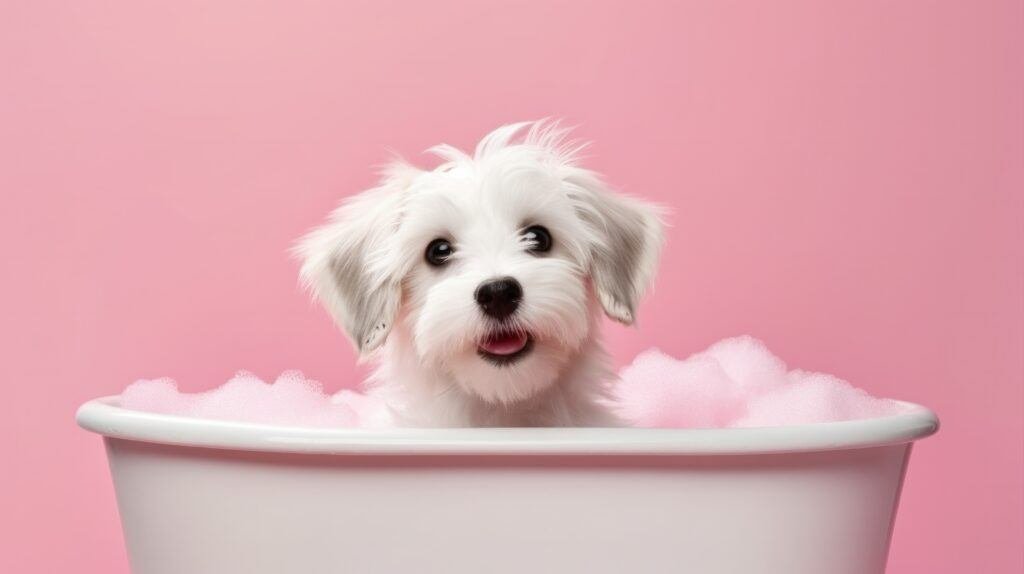
Bathing your puppy is essential for their hygiene and health. The right products and techniques ensure a positive experience for both of you, helping maintain a clean and healthy coat.
Choosing the Right Shampoo
Select a shampoo specifically formulated for puppies. Since puppies have sensitive skin, so it’s crucial to use a mild, tear-free puppy shampoo to avoid irritation. Look for products that are free from harsh chemicals and fragrances.
Proper Bathing Techniques
Start by gently wetting your puppy’s coat with lukewarm water. Then, using the diluted shampoo, lather starting from the back and down to the legs. Be careful to avoid the eyes and ears, using a damp cloth for the face.
Steps for Washing Your Puppy:
- Prepare the Bath: Gather all supplies.
- Wet Your Puppy: Use a spray nozzle or cup.
- Apply Shampoo: Gentle circular motions.
- Rinse Thoroughly: No residue left behind.
Video Credit: @AnimalWised
Drying Your Puppy Post-Bath
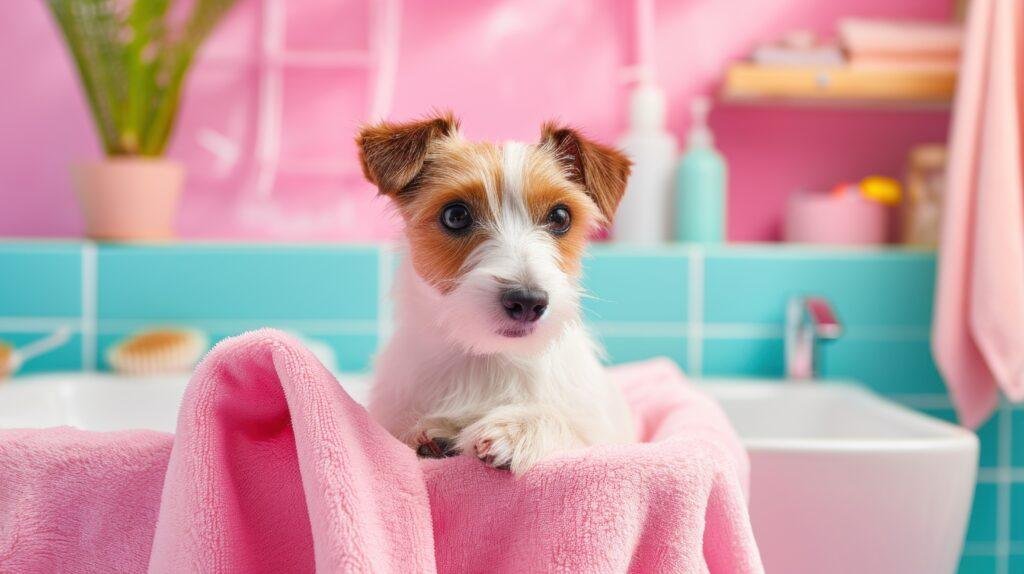
After bathing, gently towel dry your puppy. If they are comfortable with the noise, you can use a puppy-friendly blow dryer on the lowest heat setting. Remember to keep the dryer moving to avoid focusing heat in one area
Brushing and Detangling
Regular brushing and detangling are essential for maintaining your puppy’s coat health, ensuring your furry friend remains comfortable and their fur stays in optimal condition.
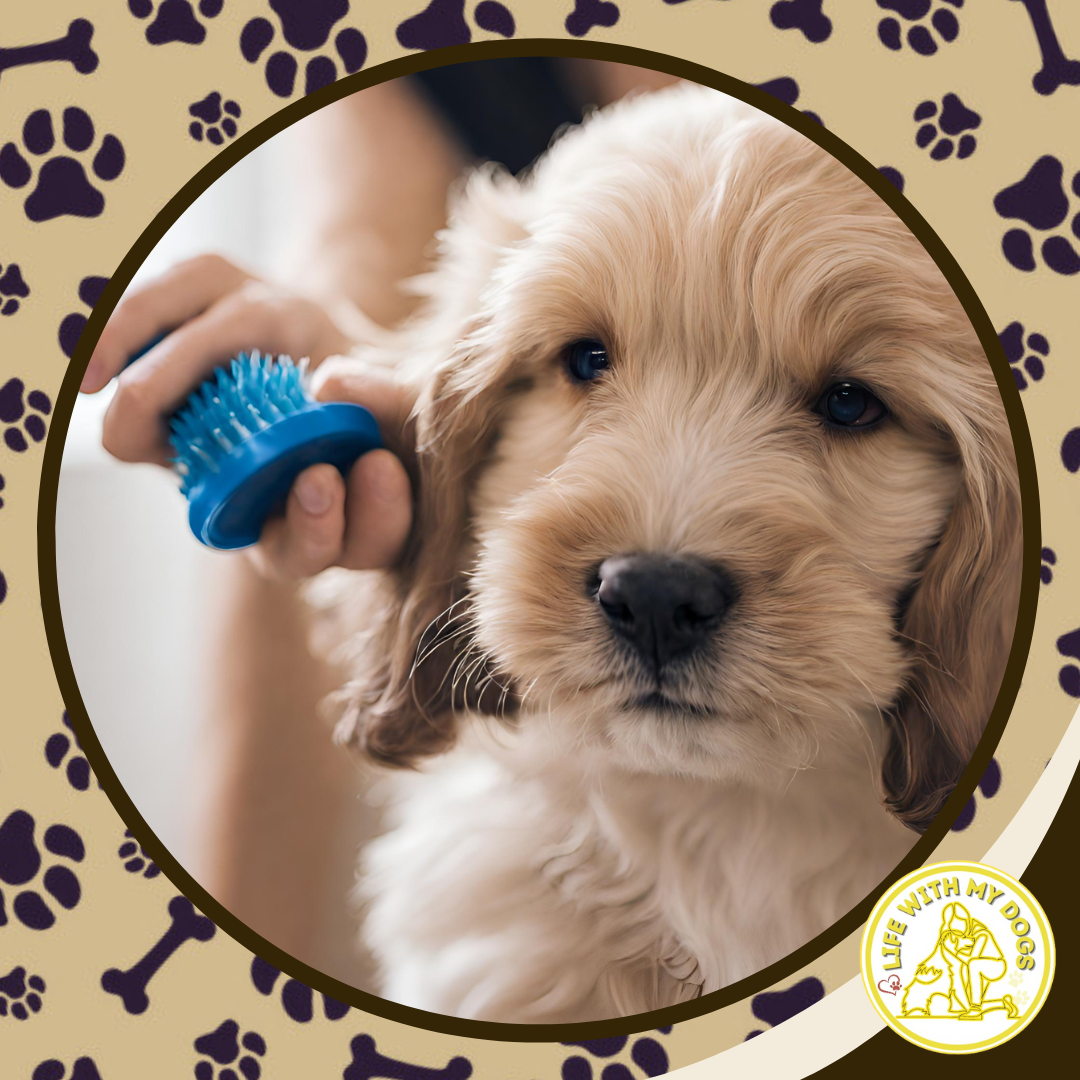
Selecting the Right Brush
To effectively groom your puppy, it’s important to choose a brush that aligns with their fur type.
- Bristle brushes are suitable for most hair types, providing gentle yet effective grooming.
- Slicker brushes are ideal for detangling and removing loose fur, making them perfect for puppies with longer coats.
- If your puppy has a thick, double coat, consider a rake or a pin brush.
- Dogs with short hair can benefit from a grooming mitt or rubber brush to remove dirt and loose hair without causing discomfort.
Techniques for Detangling Fur
When detangling your puppy’s fur, begin by gently separating the fur with your fingers to loosen knots. If needed, use a detangling spray to make the process smoother. Work through the fur with a wide-toothed comb or slicker brush, moving slowly from the ends and working your way up to avoid pulling on the skin. Remember to always be gentle to prevent pain and discomfort.
Preventing Matting
Matting occurs when loose fur becomes tangled and forms dense knots, which can be uncomfortable for your puppy and lead to skin irritation and hygiene issues. To minimize the risk of matting:
- Incorporate routine grooming sessions into your puppy’s schedule.
- Brush at least once a week to prevent mats from forming.
- Keep your puppy’s fur dry and clean, as dirt and moisture can contribute to tangles.
- After baths, ensure your puppy is thoroughly dried and combed through.
- Feeding your puppy a balanced diet can also lead to healthier fur that’s less prone to tangling.
Nail Care
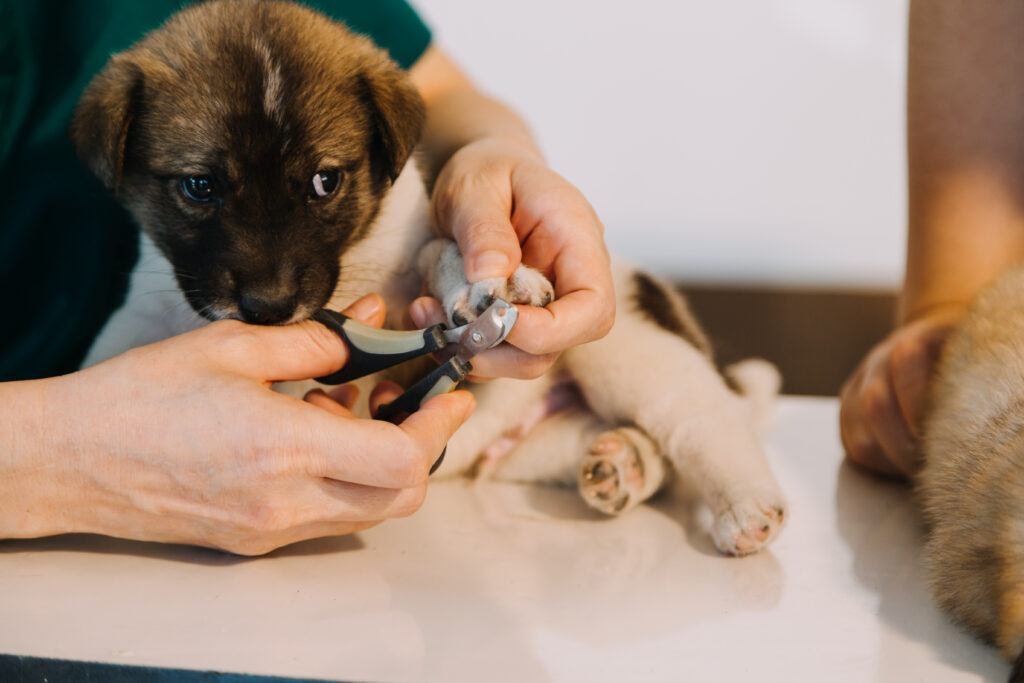
Proper nail care is essential for your puppy’s health and comfort. Learning the correct trimming techniques and maintenance schedules can prevent issues like overgrowth and nail splitting.
Trimming Techniques
To trim your puppy’s nails, you’ll need to choose the right tool. Scissor-action or guillotine-style trimmers are popular choices. The key is to cut the nails at the proper angle without splitting or crushing them. Hold the trimmer in your dominant hand, stabilize your puppy’s paw with the other, and snip the tips of the nails carefully, avoiding cutting too much at once.
Video Credit: @ShipleyCaneCorso
Avoiding the Quick
The quick is the blood vessel that runs into your dog’s nail. Cutting into the quick not only causes pain but can also lead to bleeding.
To avoid the quick, look for a chalky white ring around the nail – that’s your guideline for where to stop trimming. For dogs with dark nails, trim them in several small increments to reduce the risk of nicking them quickly.
Nail Maintenance Schedule
Establishing a nail maintenance schedule is crucial for keeping your puppy’s nails at a healthy length. For most puppies, a bi-monthly trimming routine is adequate. Always reward your puppy with treats and praise to associate nail trimming with a positive experience, building trust and easing future nail care sessions.
Ear and Dental Care

Proper ear and dental care are integral to maintaining your puppy’s health. Regular cleaning can prevent infections and dental issues, which are common in canines.
Cleaning Puppy Ears
Inspect your puppy’s ears weekly to ensure their health. Look for any signs of redness, bad odor, or unusual discharge, which can indicate an ear infection.
Clean them using a veterinarian-recommended solution. Soak a cotton ball and gently wipe the outer ear, taking care not to probe into the ear canal to prevent damage.
Dental Hygiene for Puppies
Begin dental care early to make it a routine part of your puppy’s life. Use a toothbrush designed for dogs and vet-approved toothpaste – human products harm your pet.
Brushing a few times a week can lessen plaque and tartar buildup, thus reducing the risk of dental diseases. Chew toys are also helpful tools that assist in cleaning your puppy’s teeth while they play.
Professional Grooming
Professional grooming can be essential for your puppy’s health and socialization. It involves more than just a wash and clip; it’s an opportunity for your puppy to get used to being touched and handled, which will benefit future grooming, vet visits, and overall well-being.
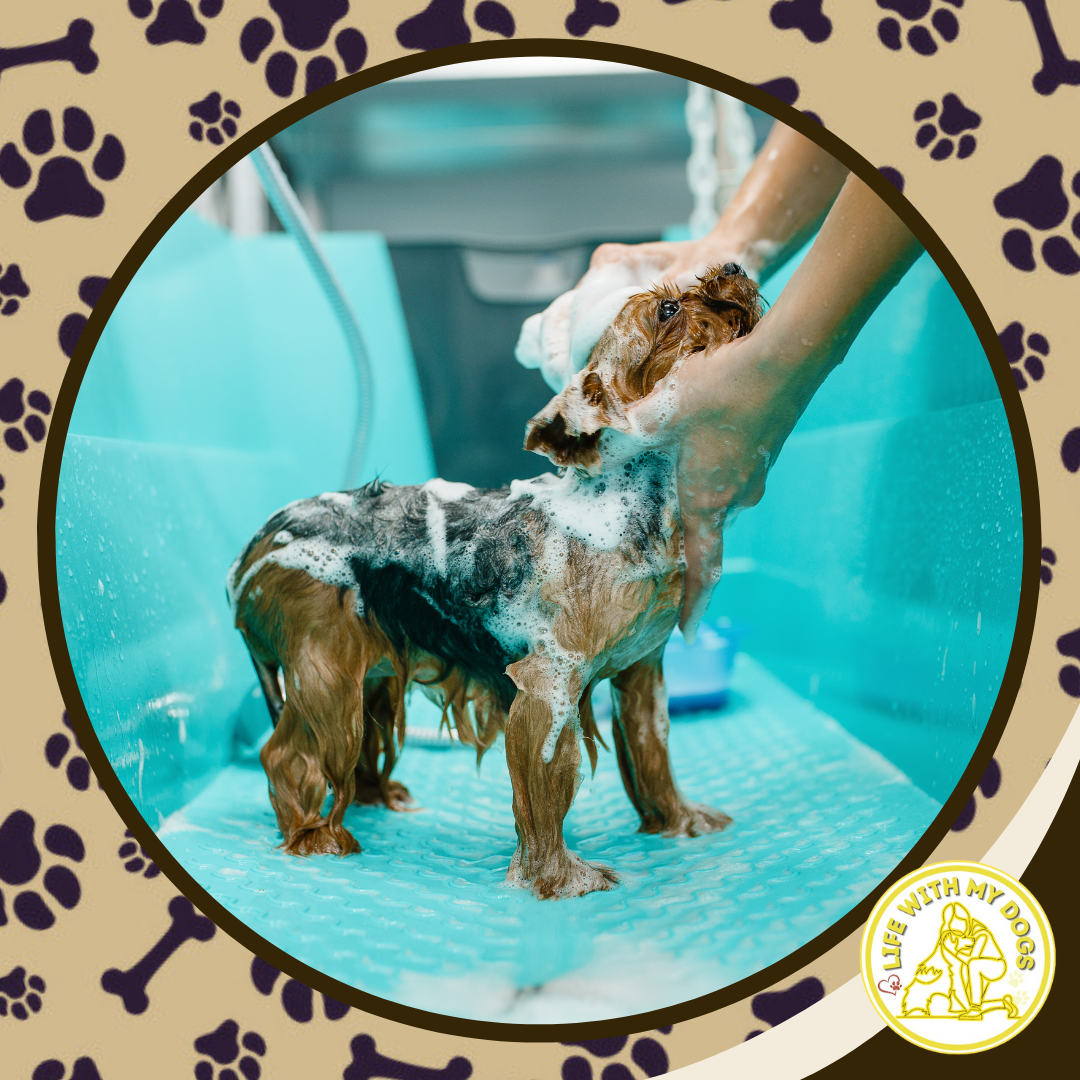
When to Seek a Professional
Deciding when to seek professional grooming depends on your puppy’s breed, coat type, and your personal comfort level with performing grooming tasks.
Most experts recommend starting after your puppy has had its full set of vaccinations, typically around 16 weeks old. At this stage, puppies are more immune to infections and are also receptive to new experiences. Early exposure to professional grooming can help your puppy get used to the process.
What to Expect
During a professional grooming session, your puppy will receive services that go beyond a regular bath at home. This includes:
- Bathing and drying: Special shampoos for sensitive puppy skin may be used.
- Brushing: To remove dead hair and knots, particularly for long-haired breeds.
- Nail trimming: Crucial for preventing pain and posture issues.
- Ear cleaning: Especially for breeds prone to ear infections.
- Haircuts: If necessary, based on the breed standard or for comfort.
Expect the groomer to hold your puppy gently to ensure a safe grooming experience, especially when working around sensitive areas like the face and paws.
Choosing a Groomer
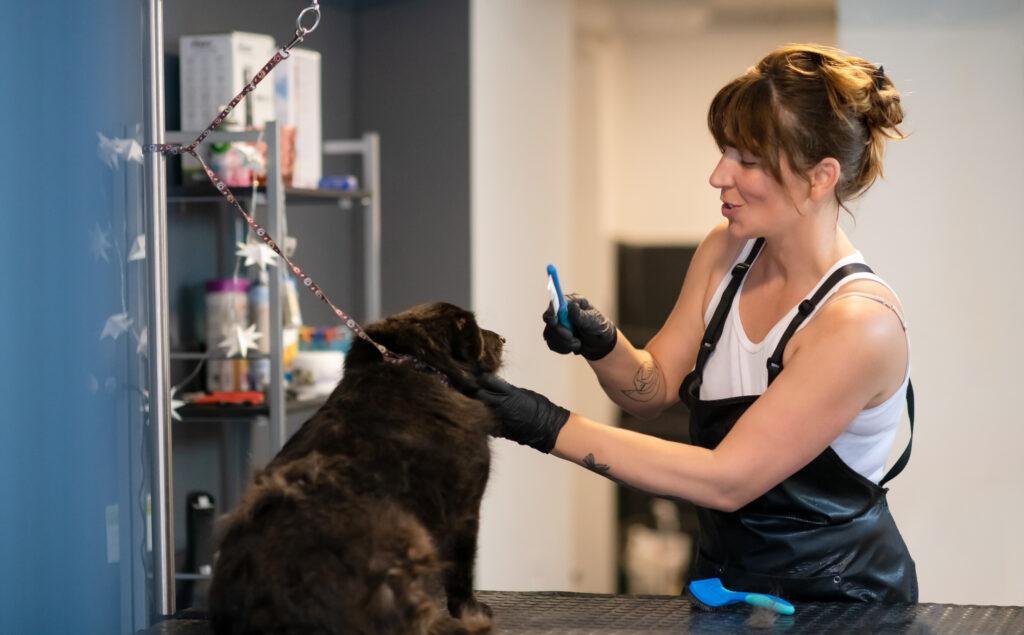
When choosing a groomer, look for a knowledgeable and experienced professional with puppies. Ask for recommendations from other pet owners, your vet, or local pet businesses.
Here are some specific tips for making the right choice:
- Certifications: Verify any potential groomer’s qualifications.
- Facility: The grooming space should be clean, secure, and well-equipped.
- Approach: Choose a groomer with a gentle, patient approach to puppies.
- Reviews: Search for positive feedback from other pet owners.
A reputable groomer will also ask you about your puppy’s health history and temperament, indicating that they prioritize the well-being of your pet. Understanding what constitutes a good puppy grooming experience can help you make an informed decision.
Health Observations During Grooming
Grooming your puppy isn’t just about maintaining a clean and healthy coat; it’s also a prime opportunity to conduct health check-ups that can prevent future issues. Attentive observation during grooming sessions aids in the early detection of skin conditions and pesky parasites.
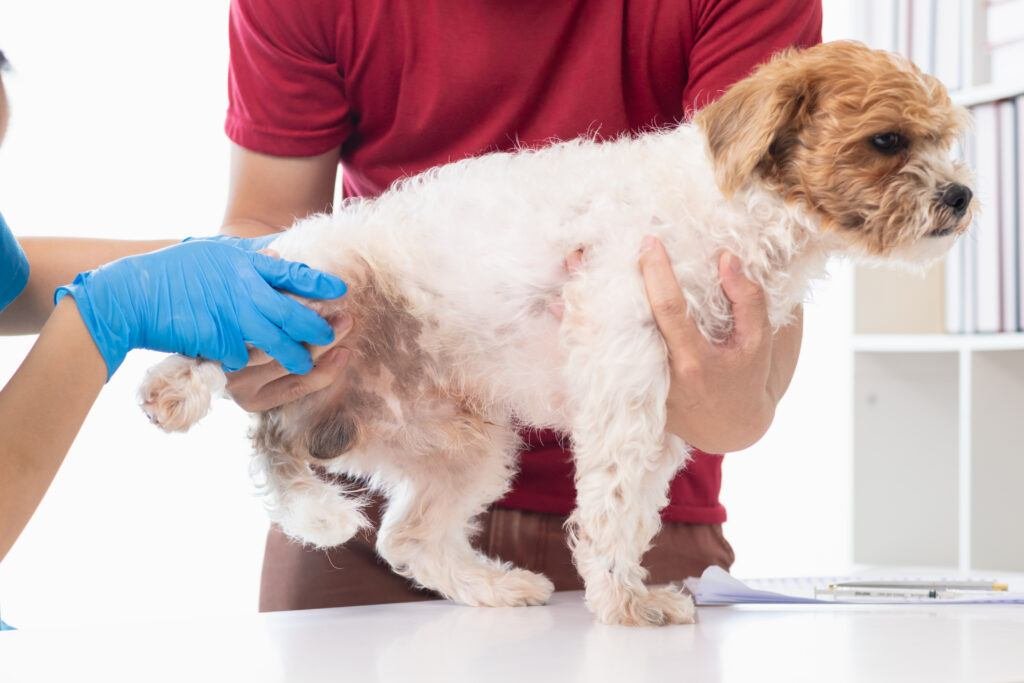
Identifying Skin Issues
Check your puppy’s skin thoroughly as you groom. Look for:
- Redness: Signals potential irritation or infection.
- Flakiness: Can indicate dry skin or more serious skin conditions.
- Hot spots or sores: These often represent localized skin infections.
Ensure you use a proper grooming routine that includes brushing, which can help identify and prevent these issues before they escalate.
Recognizing Parasites
Video Credit: @RevivalAnimal
Parasite prevention is critical for your puppy’s health. Keep an eye out for:
- Fleas: Tiny, dark insects that cause itching and discomfort.
- Ticks: Check for small, bump-like parasites, especially after outdoor activities.
Prompt detection ensures immediate action can be taken, such as bathing with a flea-preventative shampoo or visiting a vet for tick removal.
Pawsitively Perfect: Wrapping Up Your Puppy’s Grooming Guide
My love for puppies has driven me to uncover essential grooming tips for puppies that have strengthened our bond and ensured their well-being. From understanding coat types to establishing nurturing routines, these learnings and experiences have been invaluable. By starting early and gradually introducing grooming tools and techniques, we can set our puppies up for a lifetime of good hygiene practices and stress-free grooming experiences.

Now is the time to embrace grooming as a vital aspect of puppy parenthood. With care and confidence, let’s embark on this rewarding journey, ensuring our furry companions thrive with each brush stroke. Take the first step today for a lifetime of health and happiness.
Frequently Asked Questions
When grooming your puppy, having the right information can make all the difference. These FAQs cover critical aspects of grooming, from timing and tools to techniques that ensure a safe and enjoyable experience for your puppy.
What age should a puppy be for their first grooming session?
Your puppy can have its first grooming session after it has received all its vaccinations, typically around 10 to 16 weeks old. Starting early can help your puppy get accustomed to the grooming process.
What are the essential items needed in a puppy grooming kit?
A basic puppy grooming kit should include a gentle puppy-specific shampoo, a brush suited for your puppy’s coat type, nail clippers, a toothbrush and toothpaste for dogs, ear cleaning solution, and a soft towel.
How can I make grooming a positive experience for my puppy at home?
Establish a calm atmosphere and gradually introduce your puppy to grooming tools and processes. Praise and treats can be used to create positive associations with grooming.
What steps should I follow to groom my puppy for the first time?
Begin with a gentle brush to remove loose fur followed by a bath with warm water and puppy-formulated shampoo. Rinse well, dry with a towel, and brush again. Trim nails carefully, clean the ears, and brush your puppy’s teeth.
How do I safely trim my puppy's coat without causing them harm?
Use a pair of blunt-ended scissors or dog clippers designed for puppies. Ensure your puppy is still and calm, and trim the coat slowly, following the natural body lines. Avoid cutting too close to the skin.
What are some effective techniques to calm a nervous puppy before grooming?
Create a soothing environment with minimal noise and distractions. Handle your puppy gently, speaking in a soft tone. Before using grooming tools, familiarize your puppy with the sensation of grooming tools by allowing them to sniff and investigate them.
Explore the World of Dog Grooming with Us!
Discover expert tips, engaging content, and insightful product reviews on adult and puppy grooming by joining our vibrant community across social media platforms.
Facebook: LifeWithMyDogs Instagram: lifewithmydogs2 Pinterest: lifewithmydogs2 Twitter: LifeWithMyDogs9 YouTube: LifeWithMyDogs830
Connect with fellow dog lovers, share your experiences, and master the art of grooming for a happy and healthy life with your furry companions!


